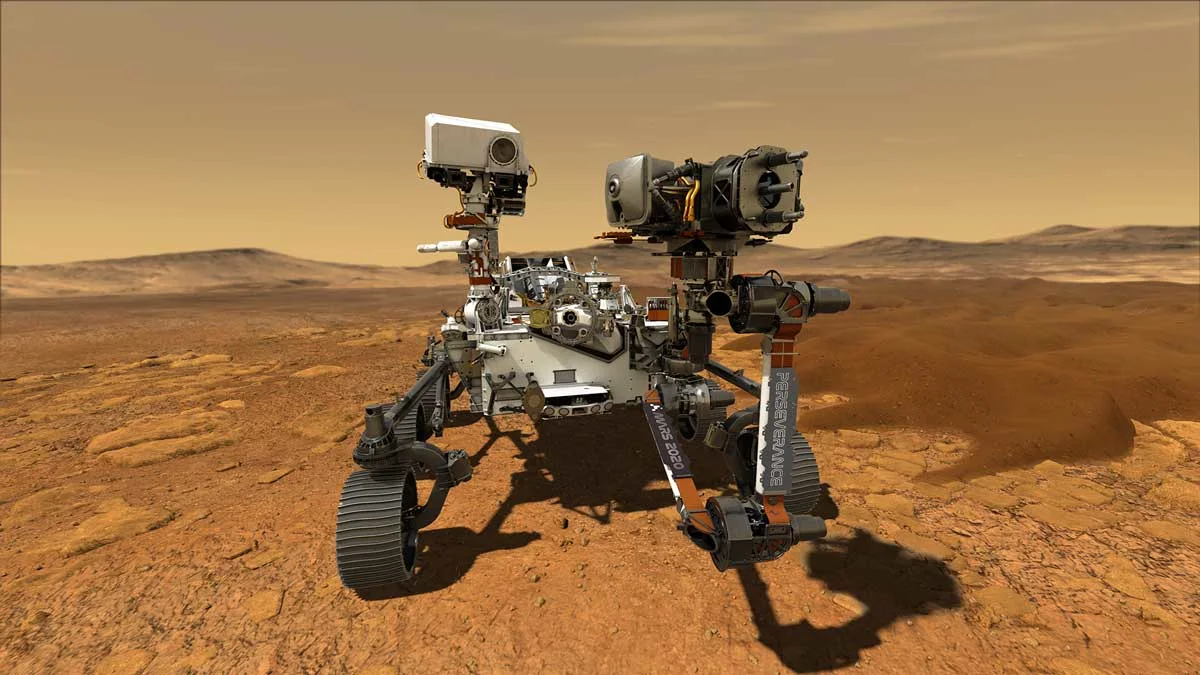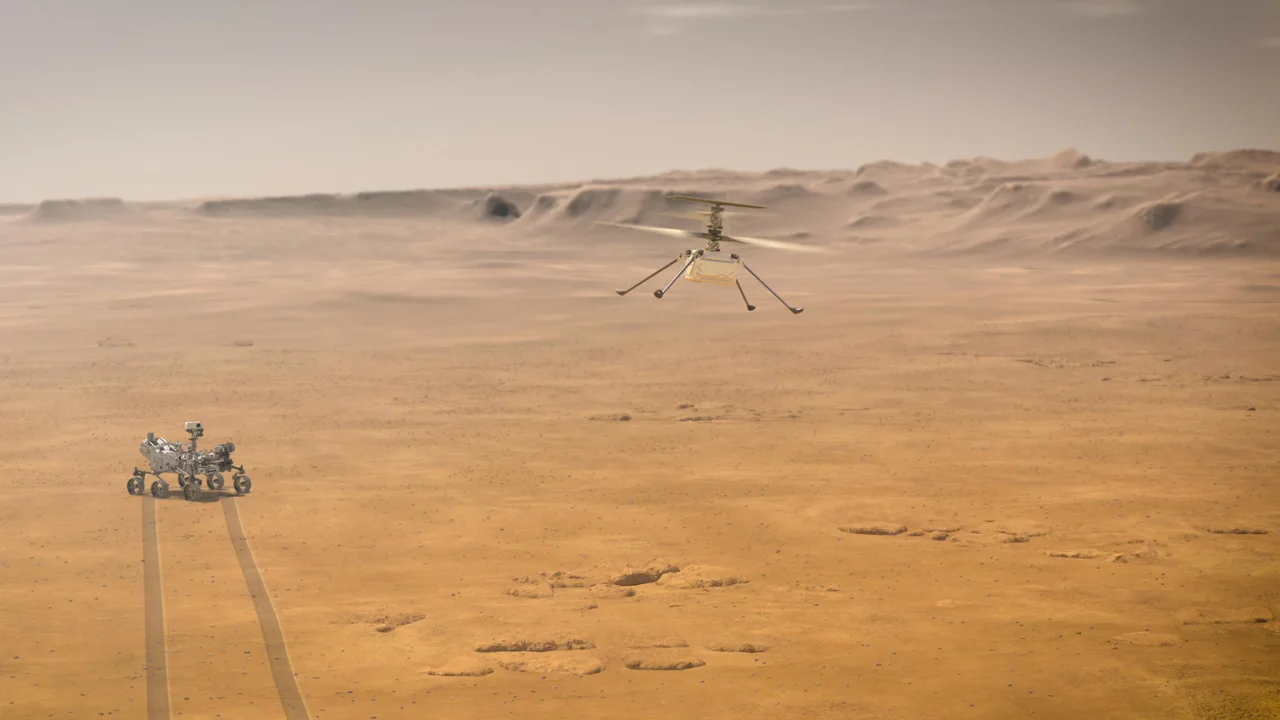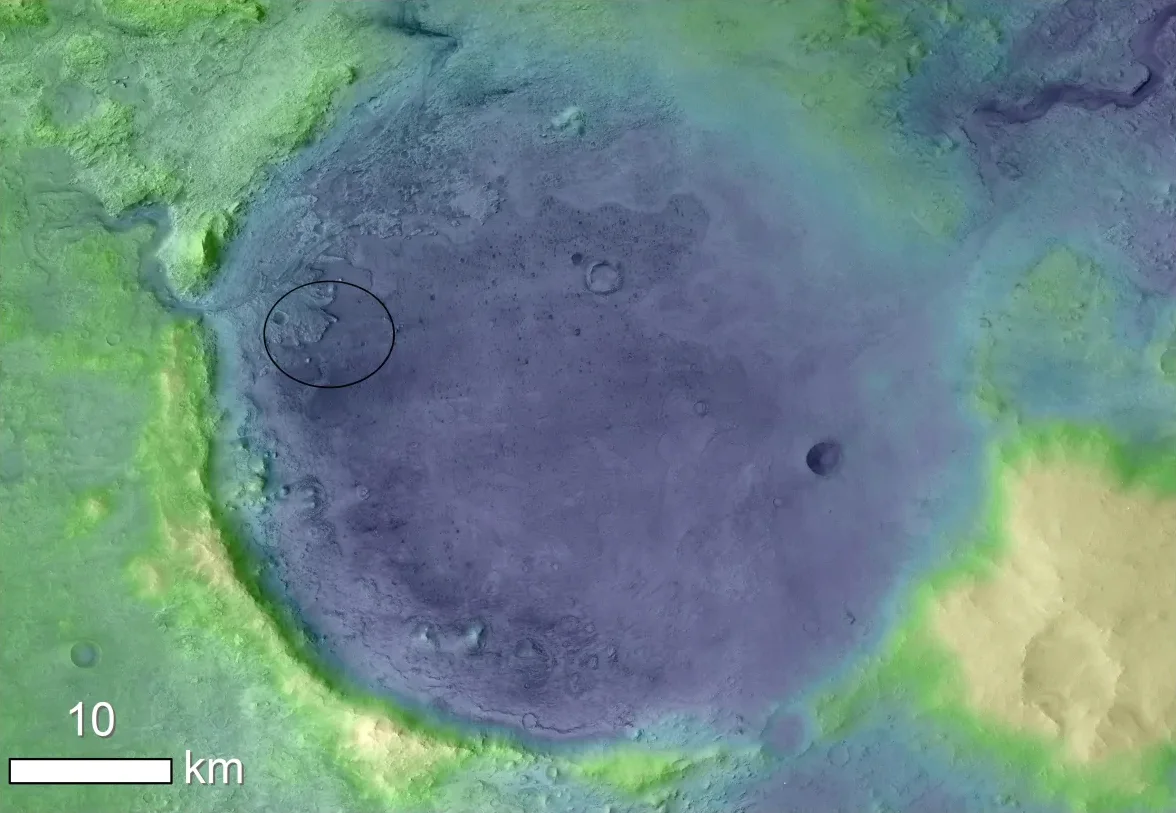
Canada lends hand to snag pieces of Mars on new mission set to launch Thursday
Mars is getting yet another visitor.
If everything goes as planned on Thursday, NASA's Mars 2020 Perseverance rover will blast off from Cape Canaveral, Fla., on its way to search for signs of past life on the Red Planet.
This is no run-of-the-mill rover. Perseverance is equipped with HD cameras to record what NASA refers to as the rover's "seven minutes of terror," its descent through the Martian atmosphere. Perseverance is also bringing microphones and a small helicopter to Mars.
The rover's mission is to collect samples of the Martian soil and leave them on the surface where they will be collected at a later date by a separate rover and then returned to Earth.
Choosing where and what to dig for is no easy task. And that's where a team of scientists — including the University of Alberta's Chris Herd — comes in.
"This rover is different from anything that's been sent to Mars before, specifically because it can collect samples," said Herd, a geologist and professor in the university's faculty of science.
"Our task is to help the mission to choose and decide the specific locations to get samples from after we land."

This artist's concept shows the Mars helicopter Ingenuity flying, with the Perseverance rover in the distance. (NASA/JPL-Caltech)
Recent research suggests Mars was once home to an ancient ocean. It had rivers and lakes and could have been suitable for life. Yet, none of the previous landers and rovers sent to the surface of the planet was equipped to search for any past traces of life.
That's what makes Perseverance unique.
"There is that big question whether life was ever there. Around three and a half to four billion years ago, Mars went through this quite dramatic change, globally, we think, from being relatively warm and wet with fairly neutral waters at the surface to sort of acidic waters and then drying out," Herd said.
"We don't really understand why that transition happened. Why did Earth go one way … whereas Mars went a different way?"
Read more: NASA Perseverance is about to leave on its journey to Mars. Here's how to watch
LANDING LOCATION
Not every location on Mars will have the same story to tell. So it was extremely important that a site that was once wet and that held the best promise for finding traces of past life be chosen.
After going through a list of candidate sites, the Jezero Crater was eventually selected.
Billions of years ago, a river flowed into the 50-kilometre–wide crater, depositing sediment into the lake that is now the dusty and rocky Jezero Crater.
But within those rocks, there's the potential to preserve the ancient environment where life could have once existed, Herd said. Those sediments formed a delta, and here on Earth, we know that deltas can preserve organic matter that could have been carried from upstream.

An elevation map of the Jezero Crater on Mars, the landing site for NASA's 2020 Mars Perseverance rover. Lighter colours represent higher elevation. (NASA/JPL-Caltech/MSSS/JHU-APL/ESA)
"Those layers don't necessarily preserve the individual fossilized bacteria, but they preserve kind of the work that the bacteria did to make layers as they sort of climbed up through the sediment to try to stay close to the surface of the lake, closer to the sun," Herd said.
The rover has seven different instruments to assist in its detective work, including radar, X-ray and ultraviolet equipment, and one device that will even create oxygen from Martian atmospheric carbon dioxide.
More from Mars: NASA InSight's beleaguered 'Mole' suffers another setback
RETURNING SAMPLES TO EARTH
Perseverance has 43 tubes for collecting samples as it trundles along the surface of Mars. The minimum goal is to collect 20 samples.
The rover is also equipped with what are known as witness plates, where tubes will be opened and exposed to collect any material that might be coming from the spacecraft. This is a method of monitoring any contamination that might have been brought from Earth, though NASA makes every effort to ensure that doesn't happen.
So when will the samples be collected and transported to Earth?
At the moment, the Mars Sample Return mission is still in its early planning stages, though the current goal is to return them by 2031. And once again, Canadians are part of the historic endeavour.
WATCH BELOW: NASA SCIENTISTS DISCUSS THE IMPORTANCE OF PERSEVERANCE'S MISSION
Kim Tait, curator of mineralogy at the Royal Ontario Museum in Toronto, is involved in the Mars Sample Return mission, particularly figuring out how to treat the samples once they arrive on Earth.
"We have to protect the samples from us as much as we have to protect us from the samples," said Tait. "How do we do that safely and how do we handle them so that we could actually get the science answers that we want?"
The entire effort is a global one, Tait said. The Canadian Space Agency has provided funding for Herd's work and the European Space Agency is partnering with NASA in planning the rover that will collect the samples.
For now, who gets access to those samples is in discussion, though Tait said they will likely be shared internationally.
"This is a global investment. It's a global endeavour, just because of the complexity of the whole mission," she said.
But Tait said she certainly hopes she will get a crack at it.
"What's really exciting is that this is going to be samples coming from Mars that are from a deltaic system where it was rich with clays and we can see sedimentary structures," she said. "I want to be the first one to crack open those tubes."
Herd is similarly anxious to delve into ancient Mars and look for signs of life. He said he's been dreaming about this since he was a teenager.
"Somewhere around the age of 13, I said, 'I want to be there when samples come back from Mars. I thought, 'Wouldn't it be awesome, not only to be a geologist but to learn about the geology of another planet,'" he said.
"Now we're embarking on this first step and bringing samples back … It's hard to contain the excitement."
This article, written by CBC Senior Science Reporter Nicole Mortillaro, was originally published for CBC News.










